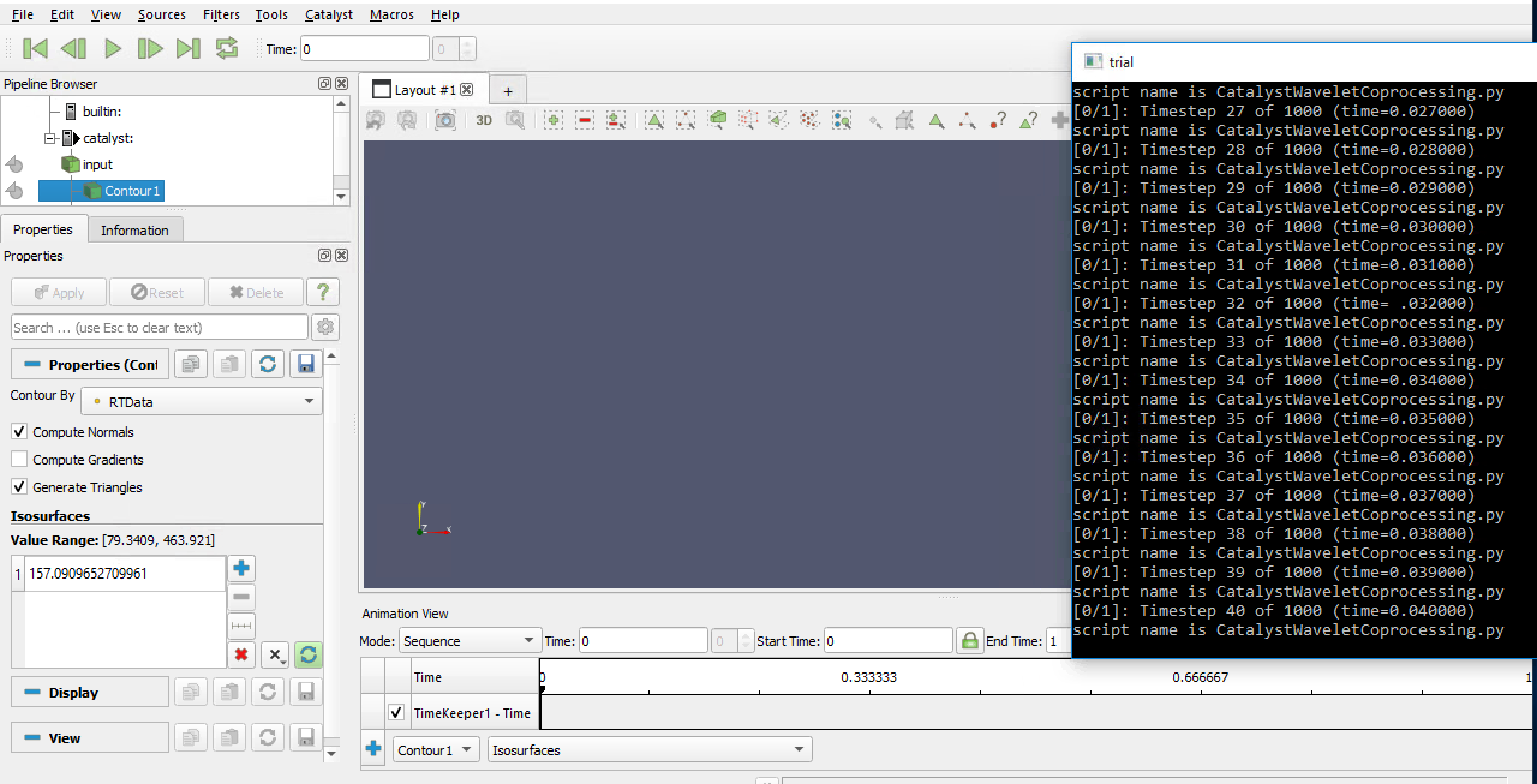

Researchers in OGS (National Institute of Oceanography and Experimental Geophysics) use a 3D numerical model OGSTM–BFM to study the nutrient and carbon cycles in the Mediterranean Sea and their sensitivity to climatic changes. In situ visualization allows to observe results during the simulation runtime. Furthermore, this approach allows to monitor and interact with running simulation, so its parameters can be modified and scientist can immediately see the effect on investigating phenomena. By using the visualization and simulation together, one can overcome the bottleneck of data transfer. In situ visualization stands for the technique, where the data are visualized in real-time, as it is being produced by simulation, and without involving storage resources. The rest is just discarded and the significant part of information may be potentially lost. Dumping and processing of all the data calculated during the simulation would take too much time, so in practice this usually means that they are stored only at several time-steps or at much coarser resolution than the original data. However, the capabilities of computing environment which is responsible for transferring the data and communication have not grown up as rapid as the computational power. On the other hand, increasing demands of the simulations need more data to be stored on a disk and analysed. For several decades, increasing power of computer clusters and advancement in parallel computing methods allow scientists to perform more and more accurate simulations in various fields of human research. Traditionally, the process of performing numerical simulations consists of three separate steps: First, the input parameters (such as initial or boundary conditions) are specified, then the simulation is executed and finally, in order to determine the result, it is necessary to explore and analyse generated data. You can find the original posts here and here. Note: This article was written for PRACE Summer of HPC blog as a part of my internship. Introduction to in situ visualization and ParaView Catalyst


 0 kommentar(er)
0 kommentar(er)
